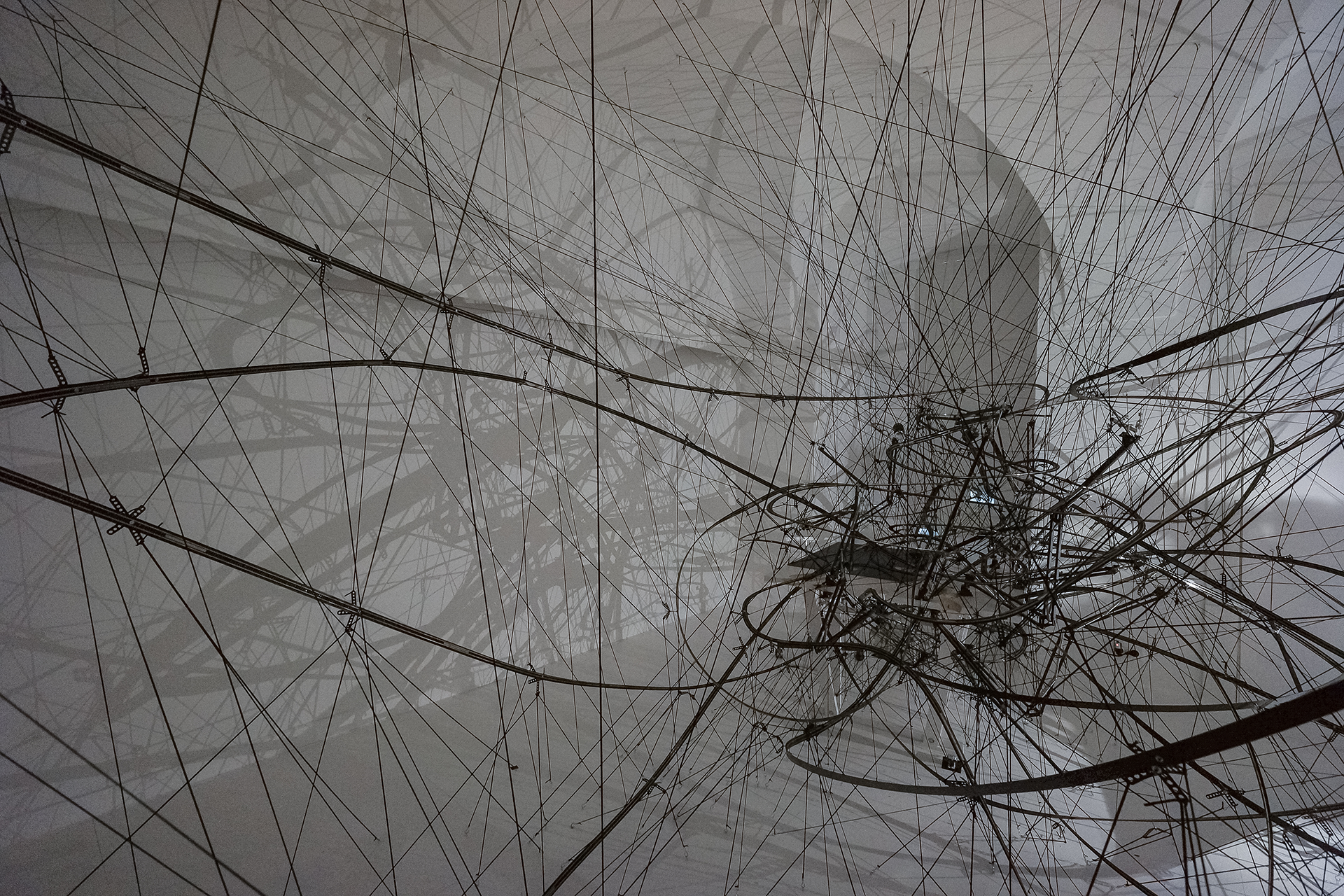INTO THE WHITE-OUT, No. 1-2
live-video installation, video experiment
2015
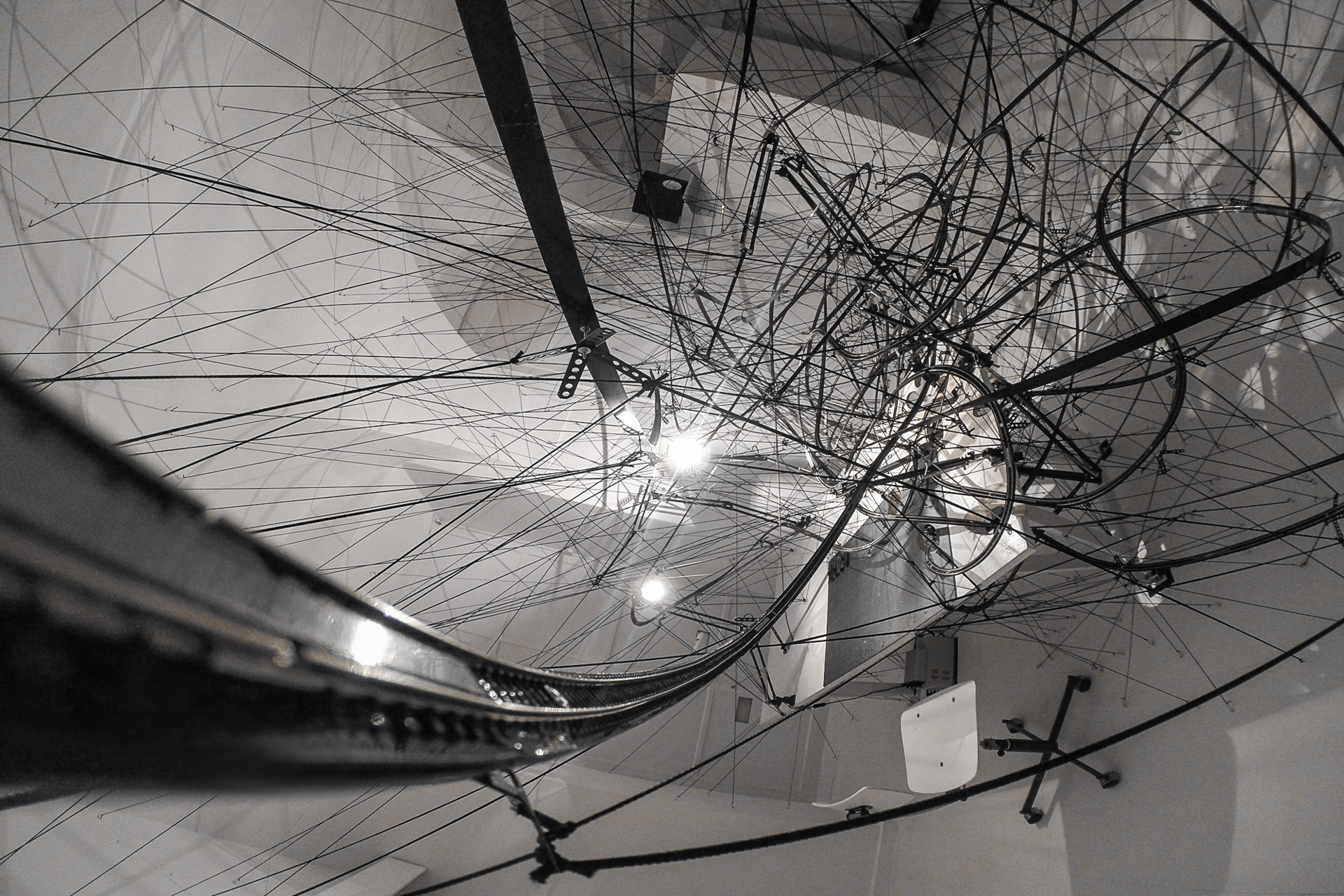
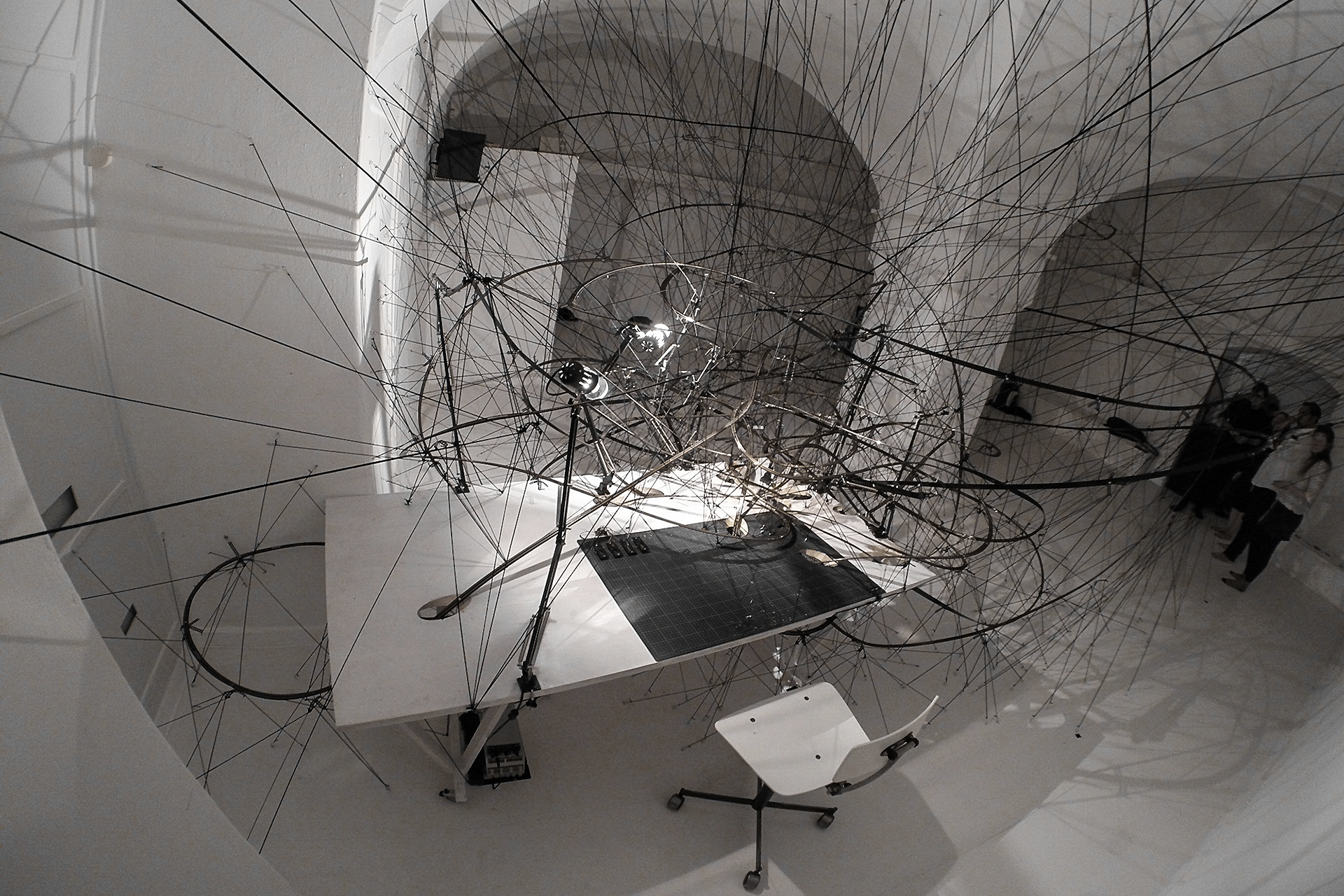
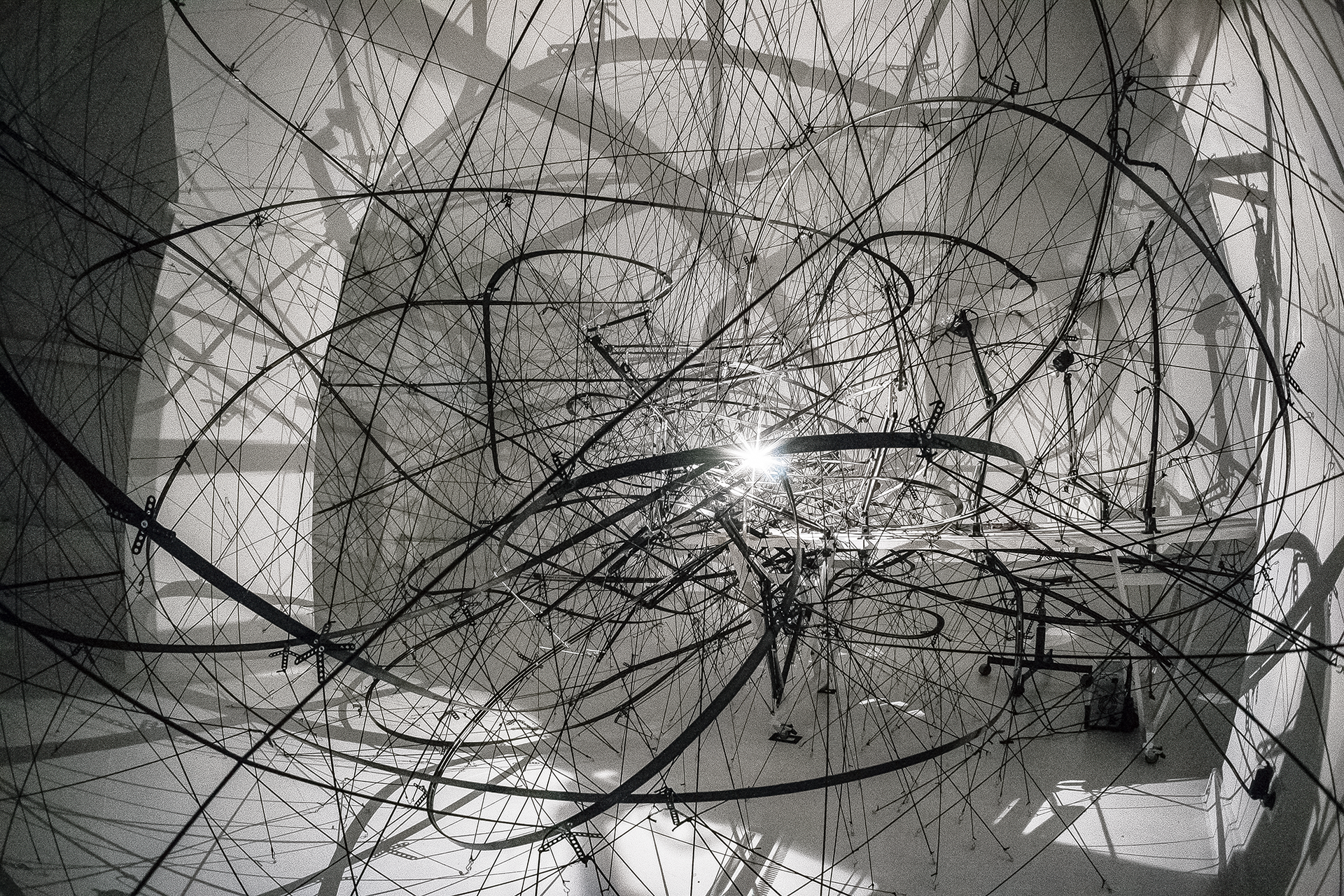



Kinematic Live-Video Installation / Experimental video - 9:55 min [total]
Part No.1 [orbiting] 5:57 min + Part No.2 [vertigo] 3:50 min
based on the installation ‘5 Colors Black’- at Galerie Göttlicher, Krems 2014
- OK Center for Contemporary Art / OÖ Art Collection - Linz/Austria 2015
- ECP Den Haag 2015 – The Hague/Netherlands
Video, Installation Design Gregor Holzinger, Adam Orlinski
Electronic Design Daniel Skrzipek
Sound Design Abby Lee Tee
based on the track "aquarium eyes (abby lee tee remix)" by Ritornell
An attempt of creating a perception of directionless space: a space relieved of any prevailing gravities or the usual up-/downward-directions, freed from the constraints of topocentric coordinate systems or cartesian planes - eliminating the z-axis (and its singular/discrete characteristic), implying a space in a state of absolute relativity, a space of only relative gravitations between correllating bodies, or even a momentary lapse of gravity in a continuous sequence of visual reference shifts (base-plane/gravity-shift effects and negative-G situations/upwards gravity(!)) - rendering the state of things/laws of physics as an only fleeting and highly local phenomena.
And thereby recreating the experience of FALLING INTO SPACE.
Part No.1 [orbiting] 5:57 min + Part No.2 [vertigo] 3:50 min
based on the installation ‘5 Colors Black’- at Galerie Göttlicher, Krems 2014
- OK Center for Contemporary Art / OÖ Art Collection - Linz/Austria 2015
- ECP Den Haag 2015 – The Hague/Netherlands
Video, Installation Design Gregor Holzinger, Adam Orlinski
Electronic Design Daniel Skrzipek
Sound Design Abby Lee Tee
based on the track "aquarium eyes (abby lee tee remix)" by Ritornell
An attempt of creating a perception of directionless space: a space relieved of any prevailing gravities or the usual up-/downward-directions, freed from the constraints of topocentric coordinate systems or cartesian planes - eliminating the z-axis (and its singular/discrete characteristic), implying a space in a state of absolute relativity, a space of only relative gravitations between correllating bodies, or even a momentary lapse of gravity in a continuous sequence of visual reference shifts (base-plane/gravity-shift effects and negative-G situations/upwards gravity(!)) - rendering the state of things/laws of physics as an only fleeting and highly local phenomena.
And thereby recreating the experience of FALLING INTO SPACE.
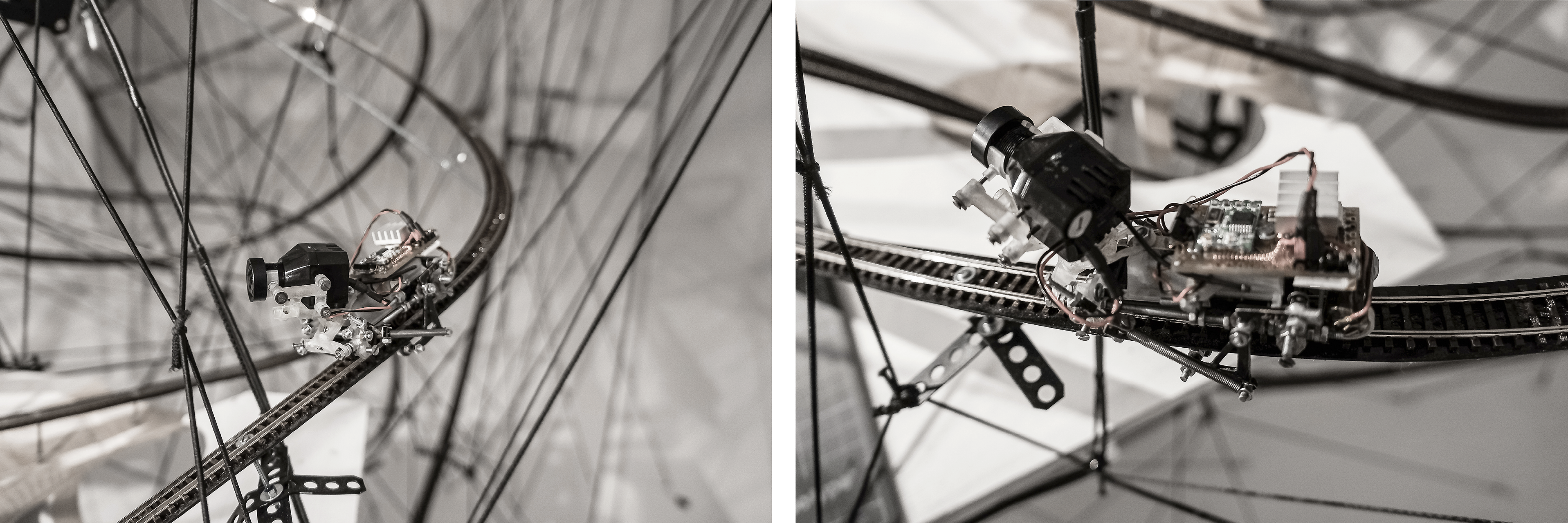
‘TRAVEL-CAM’ - Live-Video coverage out of the individual perspective of the “Traveller” (‘drive-through’-persp.), cf. a space-probe/‘Raum-sonde‘in a state approaching ‘whiteout‘ (→ see below)
leading to a change of perspective by screening a real-time video feed of the traveller´s view (live-video out of its moving viewpoint, filmed by an on-board mini-camera) on a video-screen in the spatial context of the installation/exhibition space
(--> shift in perspective by establishing an additional ‘inside-out’-view -or: ‘drive-through perspective’)
leading to a change of perspective by screening a real-time video feed of the traveller´s view (live-video out of its moving viewpoint, filmed by an on-board mini-camera) on a video-screen in the spatial context of the installation/exhibition space
(--> shift in perspective by establishing an additional ‘inside-out’-view -or: ‘drive-through perspective’)
FADE TO BLACK
Chapter 3:
‚Into the White-out, No. 1-2‘ - 9:55 min (+sound)
Part No.1 [orbiting] 5:57 min + Part No.2 [vertigo] 3:50 min
Watching with sound recommended - thank you!
‚Into the White-out, No. 1‘ - Part No.1 [orbiting] - 5:57 min
‚Into the White-out, No. 1‘ - Part No.2 [vertigo] - 3:50 min
White-out Nr. (x)
Resembling a space-probe/‘Raum-sonde‘ travelling along its flyby trajectory defined by gravity assists, venturing out over the boundaries of our solar system, still connecting back to us with their oftentimes low-tech imaging equipment out of the 70s or 80s, the on-board view of an abstract space probing apparatus (camera-eye) is transmitted while orbiting through the inner reaches of a locally hyper-complex model/installation environment, an abstract universe of not closely identifiable objects and filaments of endless detail – or just the initially incomprehensible film-set and setting of the video´s own making-of -- in a movement tending towards a state of ‘whiteout’ (also: grayout), as in: „the transient loss of (peripheral) vision as it may be experienced by aircraft pilots or astronauts pulling high positive g-forces – ... and continued, or heavy G-force will rapidly progress to g-LOC (G-force induced Loss of Consciousness)“.
ref.:
→ Planetary flyby
A planetary flyby is the act of sending a space probe past a celestial body close enough to record scientific data.
Flybys commonly use → gravity assists to „slingshot“ a space probe on its journey to its primary objective, but may themselves be used as primary means.
→ Gravity assist
In orbital mechanics and aerospace engineering, a gravitational slingshot, gravity assist maneuver, or swing-by is the use of the relative movement (e.g. orbit around the Sun) and gravity of a planet or other astronomical object to alter the path and speed of a spacecraft, typically in order to save propellant, time, and expense. Gravity assistance can be used to accelerate a spacecraft, that is, to increase or decrease its speed and/or redirect its path. The „assist“ is provided by the motion of the gravitating body as it pulls on the spacecraft. It was used by interplanetary probes from Mariner 10 onwards, including the two Voyager probes‘ notable flybys of Jupiter and Saturn.
[from: Wikipedia, the free encyclopedia]
Resembling a space-probe/‘Raum-sonde‘ travelling along its flyby trajectory defined by gravity assists, venturing out over the boundaries of our solar system, still connecting back to us with their oftentimes low-tech imaging equipment out of the 70s or 80s, the on-board view of an abstract space probing apparatus (camera-eye) is transmitted while orbiting through the inner reaches of a locally hyper-complex model/installation environment, an abstract universe of not closely identifiable objects and filaments of endless detail – or just the initially incomprehensible film-set and setting of the video´s own making-of -- in a movement tending towards a state of ‘whiteout’ (also: grayout), as in: „the transient loss of (peripheral) vision as it may be experienced by aircraft pilots or astronauts pulling high positive g-forces – ... and continued, or heavy G-force will rapidly progress to g-LOC (G-force induced Loss of Consciousness)“.
ref.:
→ Planetary flyby
A planetary flyby is the act of sending a space probe past a celestial body close enough to record scientific data.
Flybys commonly use → gravity assists to „slingshot“ a space probe on its journey to its primary objective, but may themselves be used as primary means.
→ Gravity assist
In orbital mechanics and aerospace engineering, a gravitational slingshot, gravity assist maneuver, or swing-by is the use of the relative movement (e.g. orbit around the Sun) and gravity of a planet or other astronomical object to alter the path and speed of a spacecraft, typically in order to save propellant, time, and expense. Gravity assistance can be used to accelerate a spacecraft, that is, to increase or decrease its speed and/or redirect its path. The „assist“ is provided by the motion of the gravitating body as it pulls on the spacecraft. It was used by interplanetary probes from Mariner 10 onwards, including the two Voyager probes‘ notable flybys of Jupiter and Saturn.
[from: Wikipedia, the free encyclopedia]


